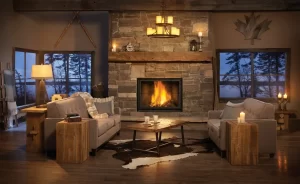Floor Wood Paneling

When choosing floor wood paneling, the first step is to measure the floor correctly. This is crucial to avoiding wastage of the panels and will also ensure that the installation is even. It is important to measure twice to ensure accuracy and to include all the angles of the room when doing so. Measurements also need to take into account the size of the wall panels to ensure that they cover the entire area effectively.
Using a dark color to complement wood paneling can also help it appear less overwhelming. Also, if you plan to place this paneling in a high-traffic room, you may want to choose a hard floor material that is moisture-resistant. Tile and cement flooring are good choices as they have classic styling and are easy to clean.
If you decide to use floor wood paneling, you will have to make sure to match it with the wall paneling. Using the same color on both will only result in a room that looks like a wooden box. You might also have to try out stain colors in different lighting conditions. If you do decide to use paneling, it is important to remember that too much wood can be too much.
Wood paneling is a great way to add charm to your house. However, be sure to check with your conservation officers before you install it. You might even have to get their approval before installing it in your home. Wood paneling is also a great insulator, which can help reduce noise and heat.
Wood paneling can be knotted pine or a light-colored clapboard. It can be textured and uneven or uniform from corner to corner. The right flooring will complement wood paneling and make the room look fresh and appealing. If you’re considering this type of wall covering, consider using a Berber carpet with a subtle pattern to balance the wood.
While floor wood paneling is an ideal flooring solution for any room in the home, it is best to avoid installing it in the bathroom and kitchen. The reason is that wood expands and contracts when exposed to moisture or rapidly changing temperatures. This can cause gaps, cupping, and bowing, which are unsightly.
Flooring is an expensive and time-consuming project, so wall panels can be a great alternative. You need to prepare the sub-floor, pad the floors with padding, cut the panels to size, sand them, and apply a clear coat of polyurethane. After the application, you should wipe off the excess oil with a cloth. Otherwise, it can cause a void and could be flammable.






